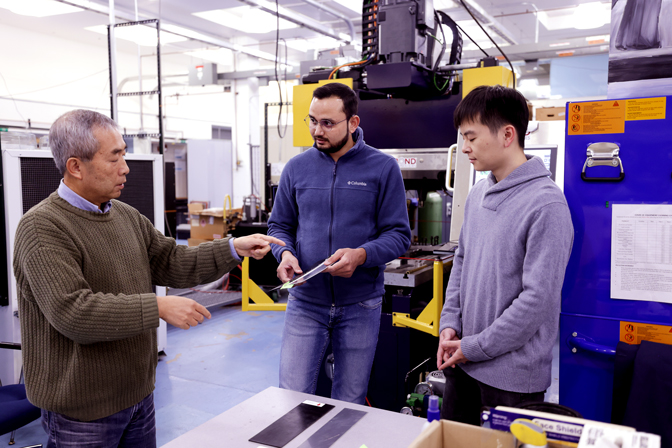
Q&A: Plastic to metal, steel to aluminum—the future of welding and lightweight vehicles
New techniques for welding very different materials could enable better cars.

New techniques for welding very different materials could enable better cars.
EXPERTS:
Making vehicle structures out of a combination of metals and plastics could make them dramatically lighter, stronger, safer and more environmentally friendly than the all-steel or all-aluminum approaches that dominate today. But how to quickly and cheaply join all those materials together has been a sticky problem. A University of Michigan lab is developing solutions.
The first viable method for welding plastic and metal directly together was recently developed under the leadership of Pingsha Dong, the Robert F. Beck Collegiate Professor of Engineering, and is now reported in Journal of Manufacturing Processes. Dong details how his team achieved a feat that was thought impossible for decades. He also discusses an aluminum-steel process that could enable 3D printing of aluminum onto steel.
Computer models show us we can make the structures of cars and light trucks as much as 40% lighter by building them with a combination of metals and plastics. Lighter weight brings a variety of advantages, chiefly better efficiency. Gas-powered vehicles could see better fuel economy, while electric vehicles can get more range. Vehicles with multi-material structures can also handle better and offer improved safety.
The problem is traditionally, the only way to join metal and plastic has been with adhesives or mechanical fasteners, which is too slow and expensive for anything but low-volume specialty vehicles. The processes we’re developing could change that and bring multi-material vehicle structures and components from the realm of exotics into the mainstream.
Our new welding techniques could also improve EV battery packs and enclosures. Today, they’re multilayer structures that are usually held together with adhesives and mechanical fasteners. They’re very difficult to take apart for repair or recycling. Welded battery packs could be taken apart and reassembled much more easily, and they could also be lighter, cheaper to manufacture and easier to keep cool.
Welding is about creating bonds between two materials at the molecular level. The conventional wisdom for decades has been that plastic and metal are fundamentally incompatible, and there’s no reason to try welding them together. However, we discovered that the right combination of heat and pressure in the right areas can cause the carbon and oxygen in plastic to bond with metal.
We used an off-the-shelf machine that looks similar to a drill press with a cylindrical spinning head. The metal is placed on top of the plastic and the head is lowered onto the two materials. This creates heat and pressure, bonding the two materials together in either a spot weld or a linear weld.

Any metal can be bonded directly with any plastic that contains an adequate amount of oxygen-carbon compounds. The key is to calculate the “sweet spot” of heat and pressure that will weld a given combination of materials, and we can work with manufacturers to determine that. For plastics that don’t have enough oxygen-carbon compounds, like polypropylene, we can put an inexpensive plastic film between the two materials to “seed” the bond with oxygen and carbon.
We’ve patented the process and we’re already working with equipment makers to develop commercial equipment that can be licensed to automakers and other manufacturers. I’d say we’ll see this technology in industry within the next two years.
I think it’s because this solution lives at the confluence of several different disciplines. Chemists tend to look only at the chemical makeup of various compounds. Materials scientists might look at chemistry and heat, but not pressure or strain. This solution requires a combination of chemistry, materials science, mechanics and welding expertise, and traditionally, it’s been difficult for these disciplines to overlap in that way. It’s easier for multiple disciplines to converge at U-M, and I think that helped lead us to this solution.

The ability to combine steel and aluminum could enable not just welding, but also inexpensive new ways to 3D-print aluminum alloys onto steel. Previous attempts have led to the formation of brittle compounds at the interface between the two metals, reducing the strength of the alloy.
Our process uses a precise combination of heat and pressure to prevent those compounds from forming, and it could offer new ways to combine the light weight of aluminum with the high strength of steel.
Dong is also a professor of Integrative Systems and Design, Naval Architecture and Marine Engineering and Mechanical Engineering. The research was supported by the National Science Foundation (grant number CMMI 2126163) and by the University of Michigan College of Engineering.